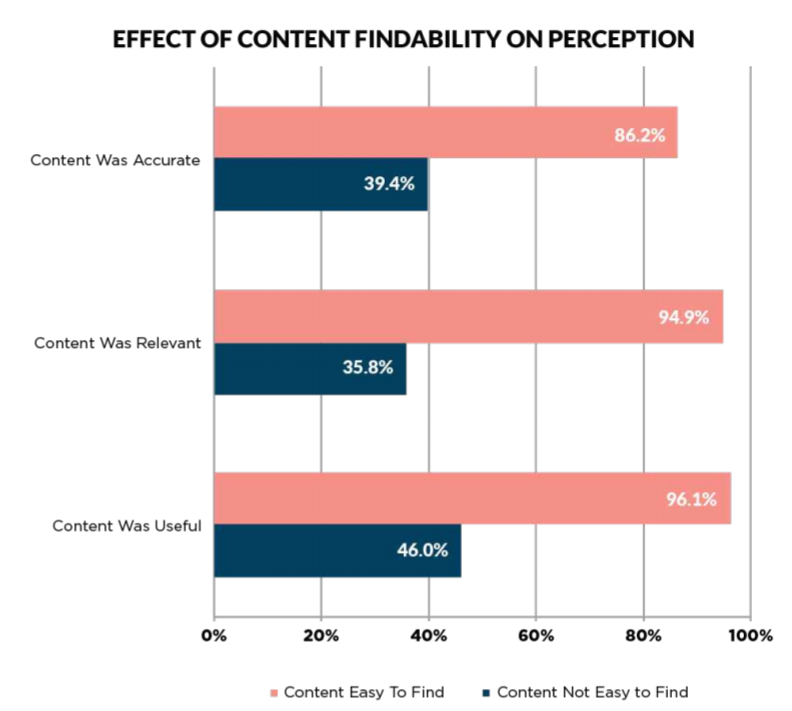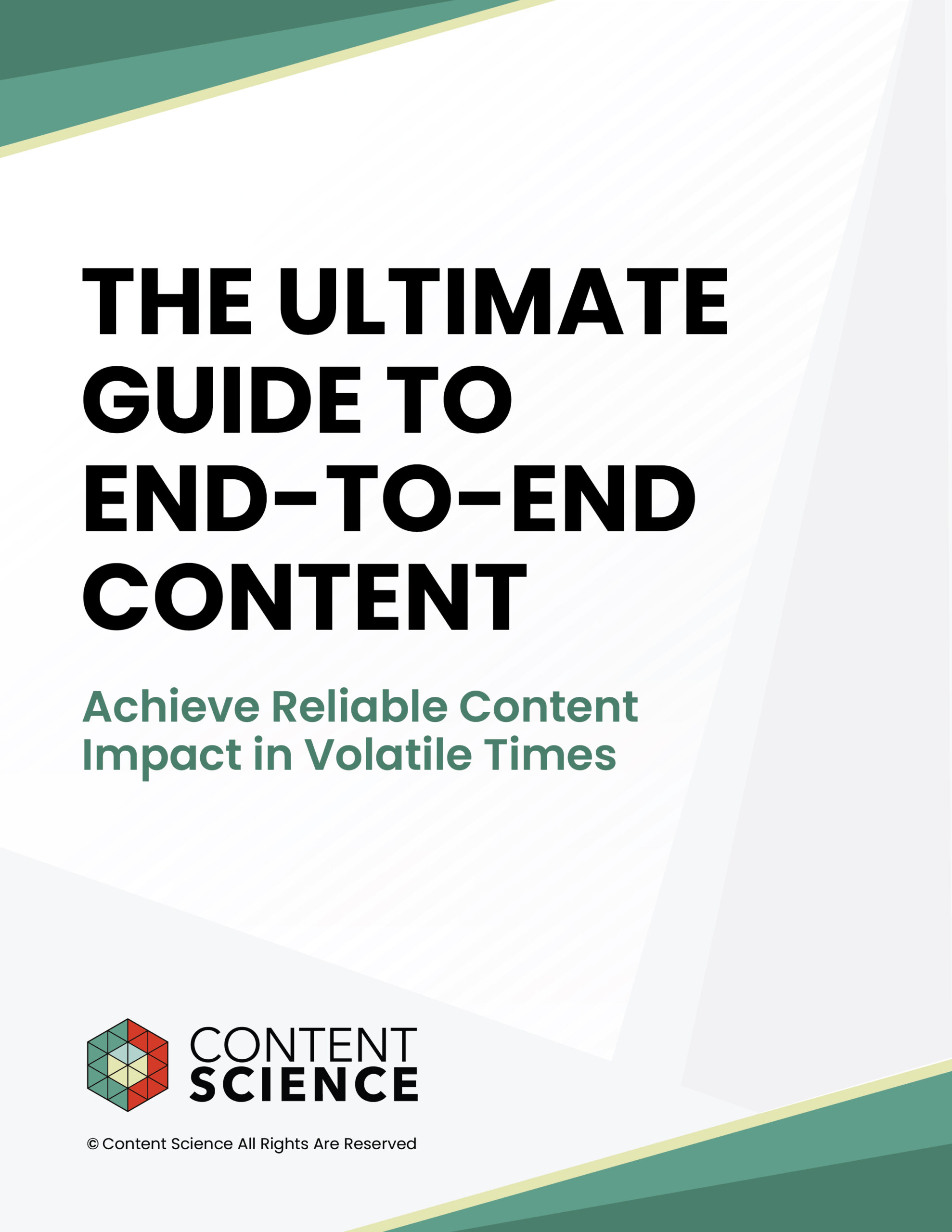
If you want to win in the content game today, you must have a successful taxonomy. A taxonomy supercharges your content—helping you connect customers with the right content, deliver content across digital channels, and analyze content performance and content effectiveness on an ongoing basis.
In this article, we’ll walk through the essentials of what taxonomy is, why your organization needs it, and basic types of taxonomy.
Defining Taxonomy
Taxonomy can be a confusing concept. Let’s break it down. Here’s how Dictionary.com defines taxonomy:
- the science or technique of classification
- a classification into ordered categories
When it comes to content, this is how we define taxonomy at Content Science
A system for organizing content in a complex ecosystem. The system often involves:
- Content structure (e.g. models of types + templates)
- Metadata (including tags)
- Controlled vocabulary (driving attribute + tag terminology)
Sometimes it’s useful to define a concept by defining what it’s not. Taxonomy is related to, but not the same as, these items:
- Navigation
- Site map
- Content inventory
Why Your Organization Needs Taxonomy
Today, customers or users now expect the right content at the right time regardless of channel—for the entire relationship with your organization. And when this doesn’t happen, there are consequences. We found that customers perceive content as 53% less effective for when they perceive difficulty in finding it. A bad experience getting to the right content also distorts other customer perceptions, including their views of the content accuracy, relevance, and usefulness.
Taxonomy acts as connective tissue, which can make content easier to…
- Organize into navigation.
- Optimize for search (internal and external).
- Deliver in personalized ways (push instead of pull).
- Aggregate + segment for landing pages and campaigns.
- Deliver across different channels and customer / user journey stages.
- Organize and analyze for performance reporting
Taxonomy makes content more effective for every business function:
| If you’re trying to do this... | Taxonomy helps by doing this ... |
|---|---|
| Improve product experience to increase adoption or reduce churn | Enabling reuse and personalization of product / support content |
| Increase engagement with thought leadership, entertainment, or buying research | Enabling improved content findability and suggestions of related content |
| Increase sales | Enabling improved product / service content findability and suggestions of related products / services / features |
| Make content operations more efficient / easier to scale | Enabling automated reuse of content |
Types of Taxonomy
Now that we’ve established what a taxonomy is and its relationship to content, let’s explore some common taxonomy types.
List: Collection of terms
The simplest form of taxonomy structure is a collection of items with some relationship to each other. Think of a shopping list, for example, or steps in a process. You can usually understand the common unifying principle behind a list of items at a quick glance. However, long lists can become cumbersome and hard to quickly scan.
Tree: Clusters of lists
This is the structure most traditionally associated with taxonomies. Multiple lists, clustered under parent categories, result in a tree structure. But these aren’t always predictable or easy to navigate. It can be difficult to maintain consistency between levels.
Hierarchy and Polyhierarchy: Tree with strict rules
Enter the hierarchy: a tree structure that follows strict rules, which are applied at every level. Categories must be mutually exclusive, as any overlap or ambiguity would result in inconsistency. In other words, a given topic can only fit in one position in a hierarchy. While that can be useful for classifying species or other items, it’s not very practical for classifying content in digital experiences. For example, it’s tough to put a cook book in one position. It would fit in a content formats category or a cuisine category.
This brings us to polyhierarchy, a more flexible version of a hierarchy. In this model, a topic or item can have more than one parent. For example, “blood tests” might be relevant to both patients and medical practitioners.
Facet system: Clearly defined attributes
A facet structure is, ironically, highly flexible. It relies on clearly defined attributes that can connect content in various ways.

For most complex digital ecosystems, a faceted taxonomy is most appropriate. An individual facet can take the shape of a list, tree, or hierarchy. Each facet describes a different attribute, for example, document types or job roles or topic categories. Facets must be distinct from each other and able to stand alone to avoid potential confusion.
Taken together, facets provide a deep view of content. This is possible because each single facet provides a pathway to the same content. It handily addresses the issue of different people classifying the same information in different ways. Users can find their way to the content using the route that makes the most sense to them or to the path they’re taking. An ecommerce website might have a dog costume appear in the “animal costumes’”category as well as the “Halloween costumes” category, for example. Or a media site could have an article tagged as both an “interview” and a “celebrity” story.
Additionally, the right facets are critical to driving personalization, such as suggesting relevant content or items to customers, and to more efficient and useful analysis, which can drive manual or automated content optimization.
To start defining facets, think about the content connections that could be useful to the customer experience and to your analysis of performance and effectiveness. Jump start your brainstorming with these five considerations for organizing content:
- Location such as user location, company / org locations
- Alphabet such as an employee directory or glossary in alphabetical order
- Time, such as date, phase, step, or chronology
- Categories, such as product category, customer type, topics / subjects, formats
- Hierarchy / priority, such as editor’s picks, most popular, in season, level of importance
To learn more about defining a taxonomy for your organization, check out How to Develop a Content Taxonomy.
Events, Resources, + More
5 Secrets of Content Ops Success: Webinar
Learn how the most successful organizations scale and mature content operations. Based on our research with 700+ content leaders and professionals.
The Ultimate Guide to End-to-End Content
Discover why + how an end-to-end approach is critical in the age of AI with this comprehensive white paper.
The Content Advantage Book
Learn more about the much-anticipated third edition of the highly rated book by Colleen Jones. Preorder the electronic version.
20 Signs of a Content Problem in a High-Stakes Initiative
Use this white paper to diagnose the problem so you can achieve the right solution faster.
Workshop: Are You Ready for AI?
Is your organization really ready for AI at scale? Let the Content Science team guide your leaders through assessing 4 areas of readiness.
Upskill with Content Science Academy
Training for modern content roles through on-demand certifications + courses or live workshops.










Comments
We invite you to share your perspective in a constructive way. To comment, please sign in or register. Our moderating team will review all comments and may edit them for clarity. Our team also may delete comments that are off-topic or disrespectful. All postings become the property of
Content Science Review.